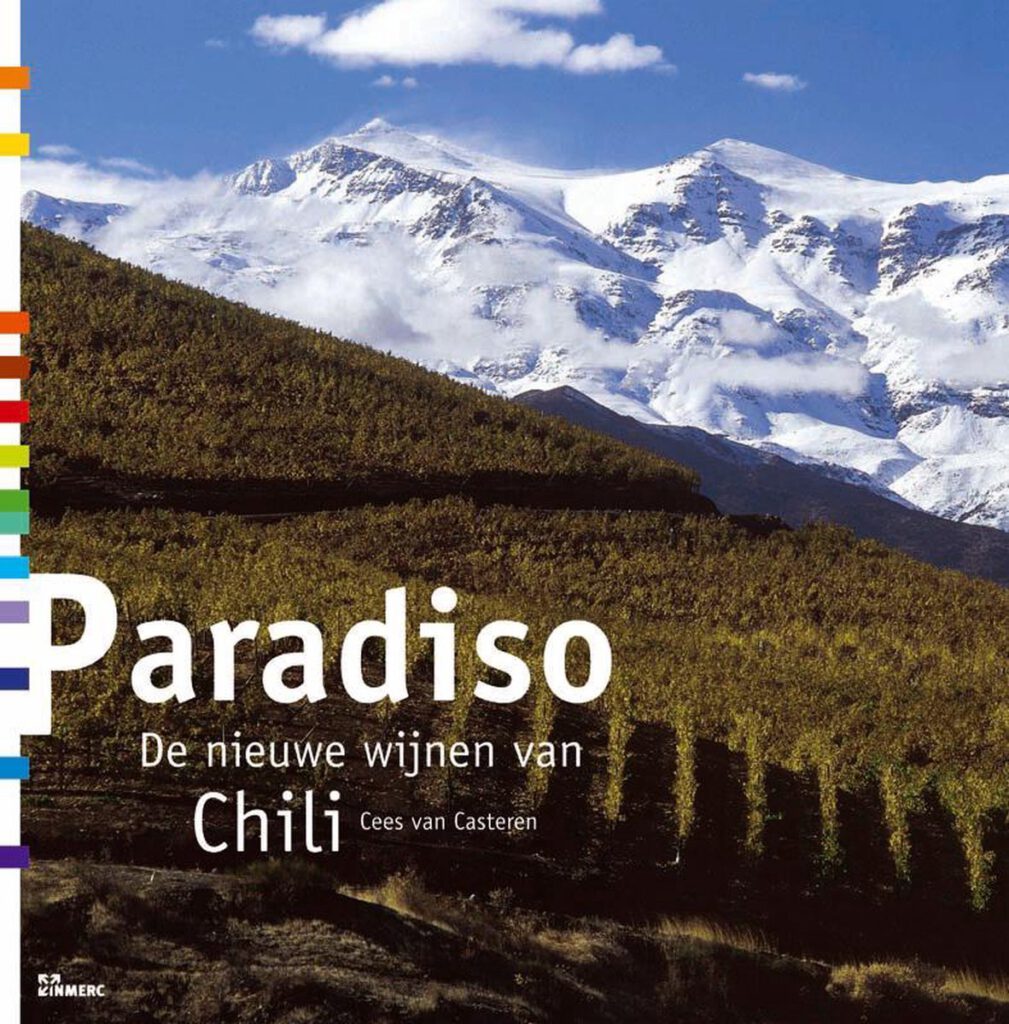
| Title | Paradiso – De nieuwe wijnen van Chili |
| Author | Cees van Casteren |
| Publisher | Inmerc |
| Language | Dutch |
| Date | 2006 |
| ISBN | 978-9066117334 (Hardcover) |
| Pages | 180 |
| Summary | The New Wines of Chile tells the fascinating story of five centuries of wine in Chile, exploring all 13 wine regions and their diverse wine styles, thus clarifying why Chile is known as a winemaker’s paradise. |
| Preview | google.nl/books/edition/Paradiso_De_nieuwe_wijnen_van_Chili |
| Shop | www.ceesvancasteren.com/boeken |
Although published almost twenty years ago, Paradiso still provides a good introduction to Chilean wines (compared, for example. to Hubrecht Duijker’s Wines of Chile, published only a few years prior). The book covers wine history, wine styles and varietes, the regions (terruño), “green” wine, and future trends, interspersed with short profiles of the top 100 (92) wineries. Today’s hot 100 would be quit similar, albeit a bit more terroir-focussed from vineyards on the edges.
See below for the wineries listed.
About the Author
Cees van Casteren is an educator, consultant and writer. He (co-) authored thirteen books, including a Dutch version of third edition of The Oxford Companion to Wine (Jancis Robinsons Wijnencyclopedie, 2010). His last book is Anyone Can Taste Wine: You Just Need This Book, 2022 published in Dutch as Proeven als een Pro, 2020.
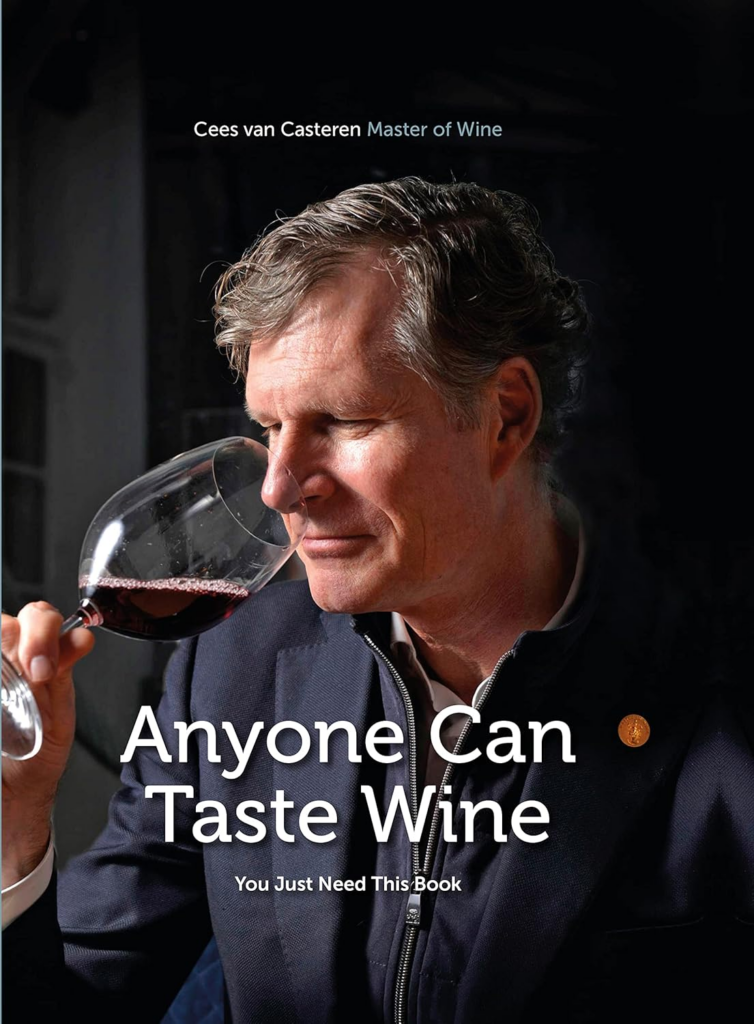
Cees passed his Master of Wine studies in 2012.
About the Book
Once Upon A Time
The first chapter briefly covers the wine history in short, illustrated, paragraphes (photos by the author) with a bit more extensive coverage of the recent “discovery” of the carmenère variety and the annual Wines of Chile Awards which Wines of Chile (also new) then started to organize.
Chile’s reputation at the time, was the “Volvo of the wine world: dependable but rather boring” (Tim Atkin MW, words he already regretted by 2006).
Through awards and blind tastings, an effort was made to alter this perception. These were the years that “icon” wines like Seña, Domus Aurea, Clos Apalta had their first vintage (note the websites are also avialable in Chinese). VIK would follow in 2009.
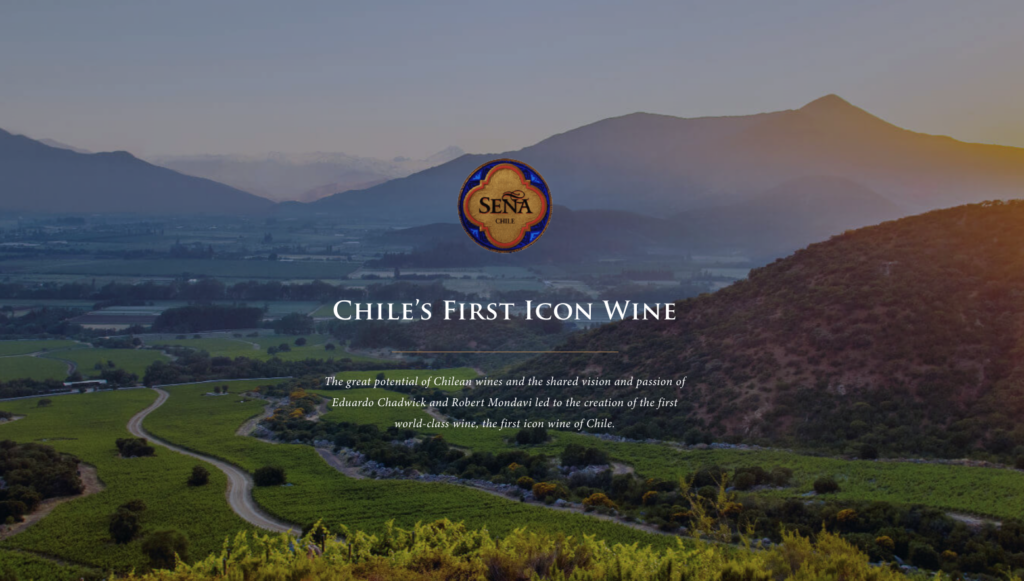
On a Side Note
In 2023, The Berlin Tasting 20th Anniversary, Uncorking the Potential of Chile’s Terroir was published. The book is available from the Academie du Vin Library website (hardcopy) or as (free) e-book from the Viñedos Familia Chadwick website.
For a contemporary review by Elin McCoy, see
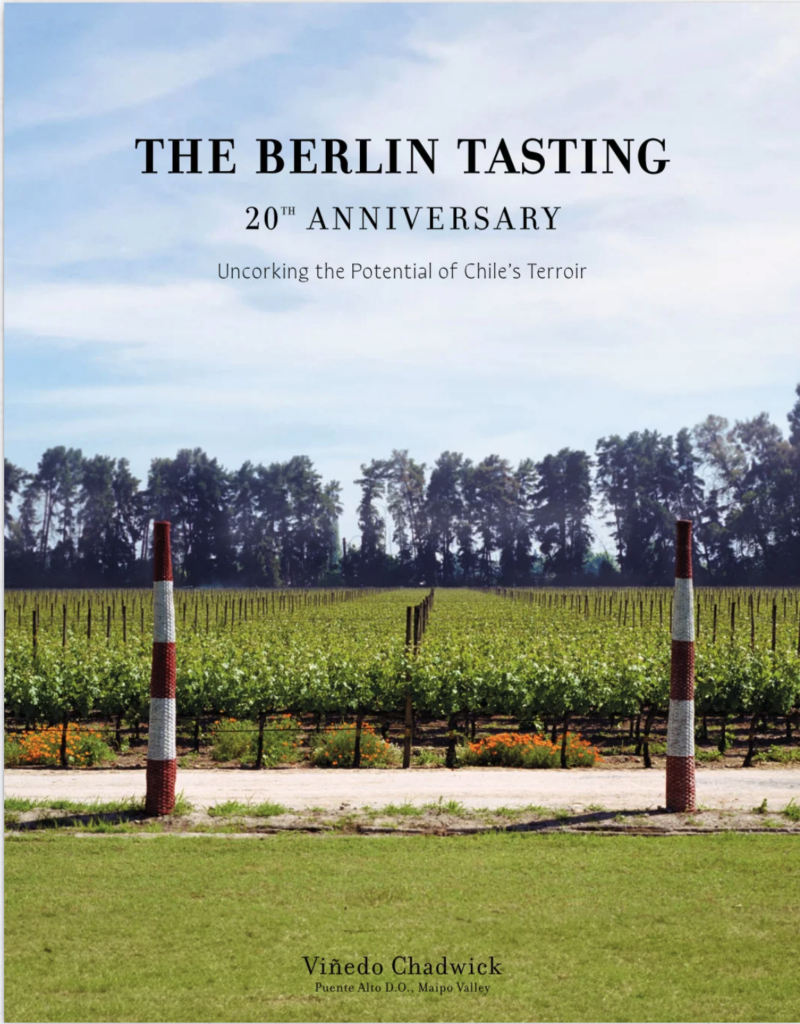
Five Styles
Next, the varieties and wine styles are described (red, white, bubbles, Pisco). The previous decade, the vineyard surface area had almost doubled (wine, fresh, dried, table grapes). In the 2000s, growth was more modest and gradual.
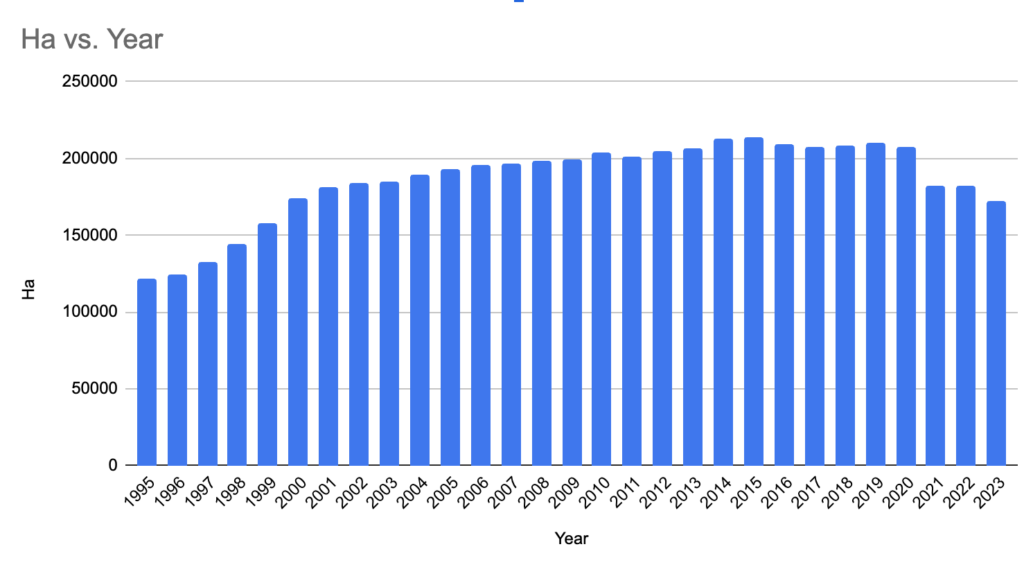
Not suprisingly, the “international” varieties grew at the expense of the more traditional país and moscatel grapes, the latter mostly grown for Pisco.
Terruño
Chapter three covers the terruño and the different regions. The Chilean Denominación de Origen (DO) classification dates from 1994 and is based on administrative regions. As a consequence, the DO Aconcagua for example (i.e. the Valparaíso region) includes both cool-climate San Antonio and Casablanca (fresh whites) as the Andean Aconcagua (dark reds). Not helpful for the consumer, and most agreed that it would be better to focus on where the grapes grow, as indicator of what’s inside the bottle. How ocean and mountain influence viticulture is discussed although we would have to wait until 2011 before the DO was enhanced with a Costa, Entre Cordilleras, and Andes specification (as optional qualifier).
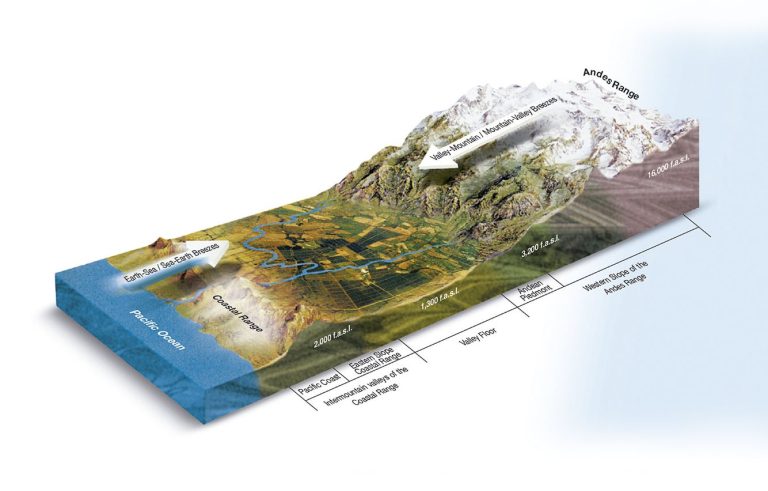
The “artist impression” above slightly dramatises the contrast as the Valle Central is much broader and the Cordillera Costal lower (below 1000m south of Santiago) as illustrated by the perfil topográfica of the Valle de Maule.
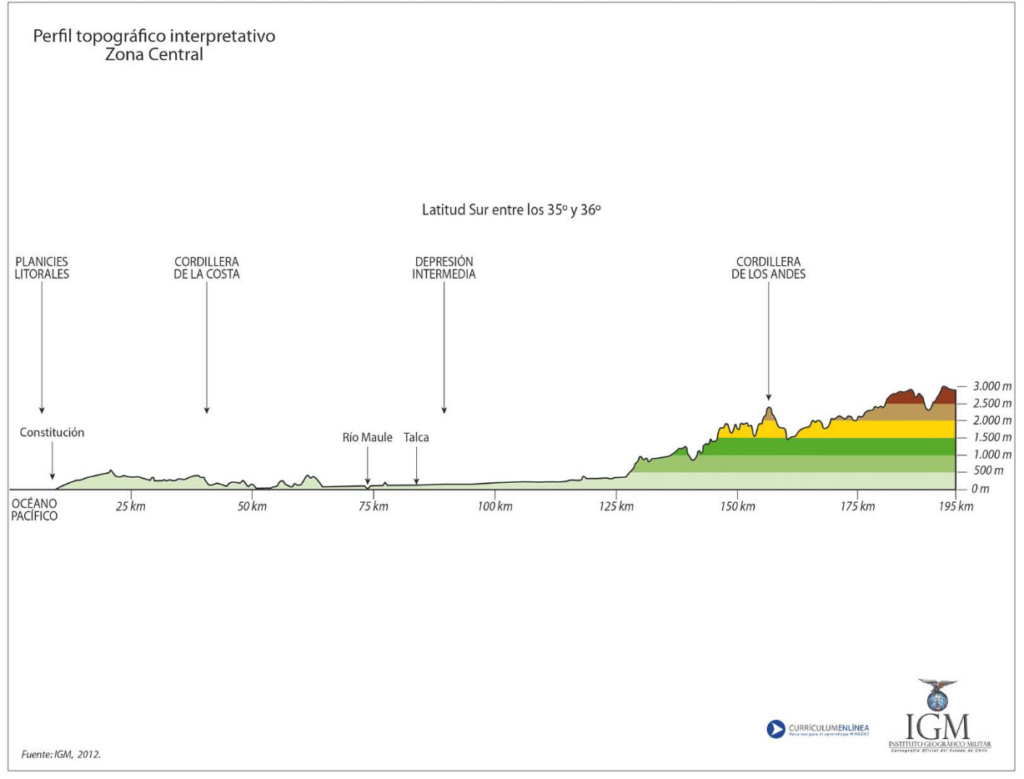
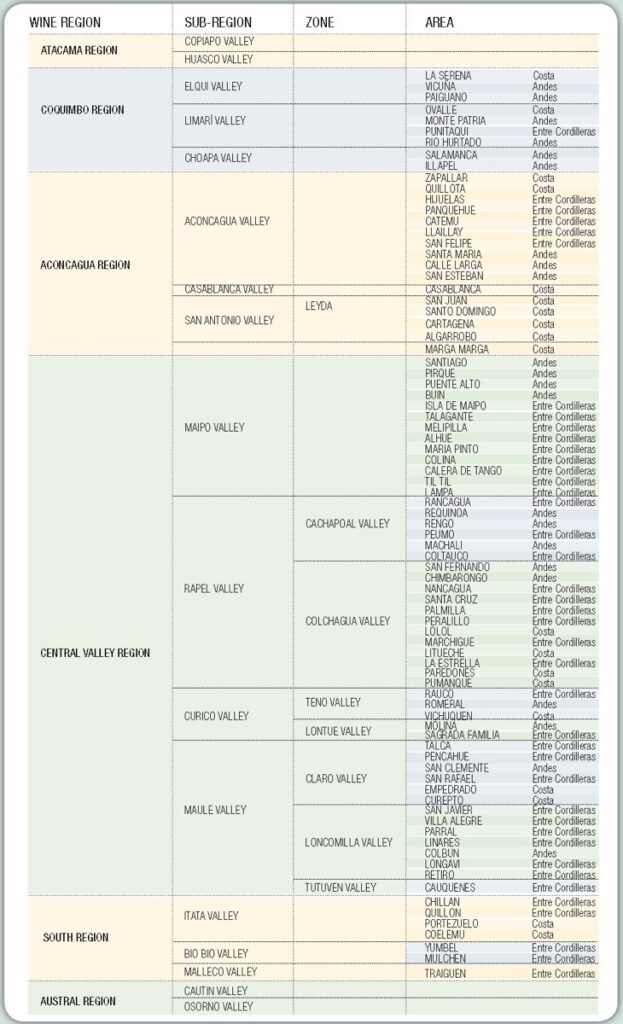
Green and Trends
The relatively favorable conditions -three insects and two diseases- for wine growing are described in a short chapter that also covers sustainable and biodynamic agriculture, still a current affair.
In mañana some trends are predicted
- New areas (terruños): Limarí, Leyda, Aconcagua Costa, Bio Bío
- Other varieties (syrah)
- Promising enologists: Morandé, Espinoza, Recabarren, and the (at the time) new generation: Hurtado, Papa, Retamal, Urejola
- The Big Four (Concha y Toro, San Pedro, Santa Rita, Santa Carolina) are getting bigger.
Wineries
The wineries mentioned in the book which are still in business can be viewed with
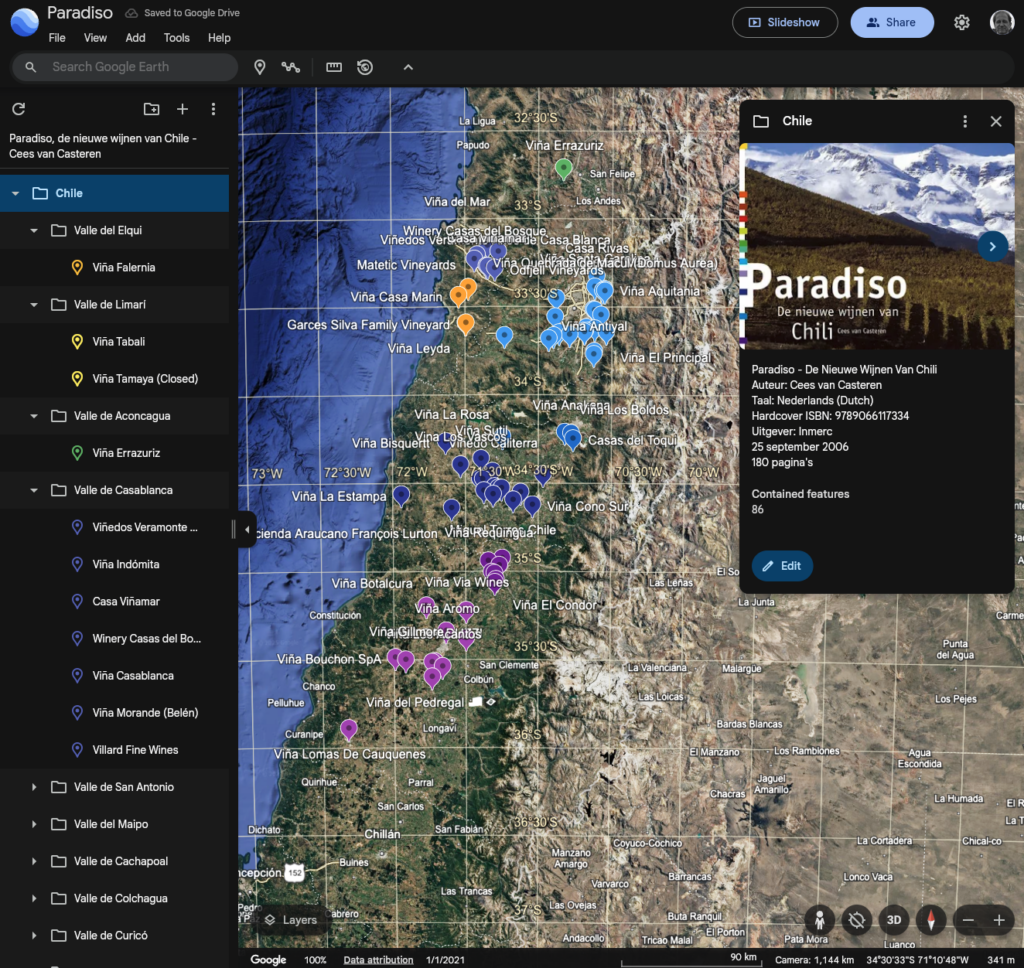
Bibliography
- Alejandro Hernández, Chile vitivinícola. Un país andino con vista al mar, 2006
- Rodrigo Alvarado, Chilean Wines, 2004
- Monty Waldin, Wines of South America, 2004
- Jürgen Matäss, Wines from Chile, 1997
- Hubert Duijker, The Wines of Chile (2000) / De charmante wijnen van Chile (1999)
- Jan Read, The Wines of Chile, 1994
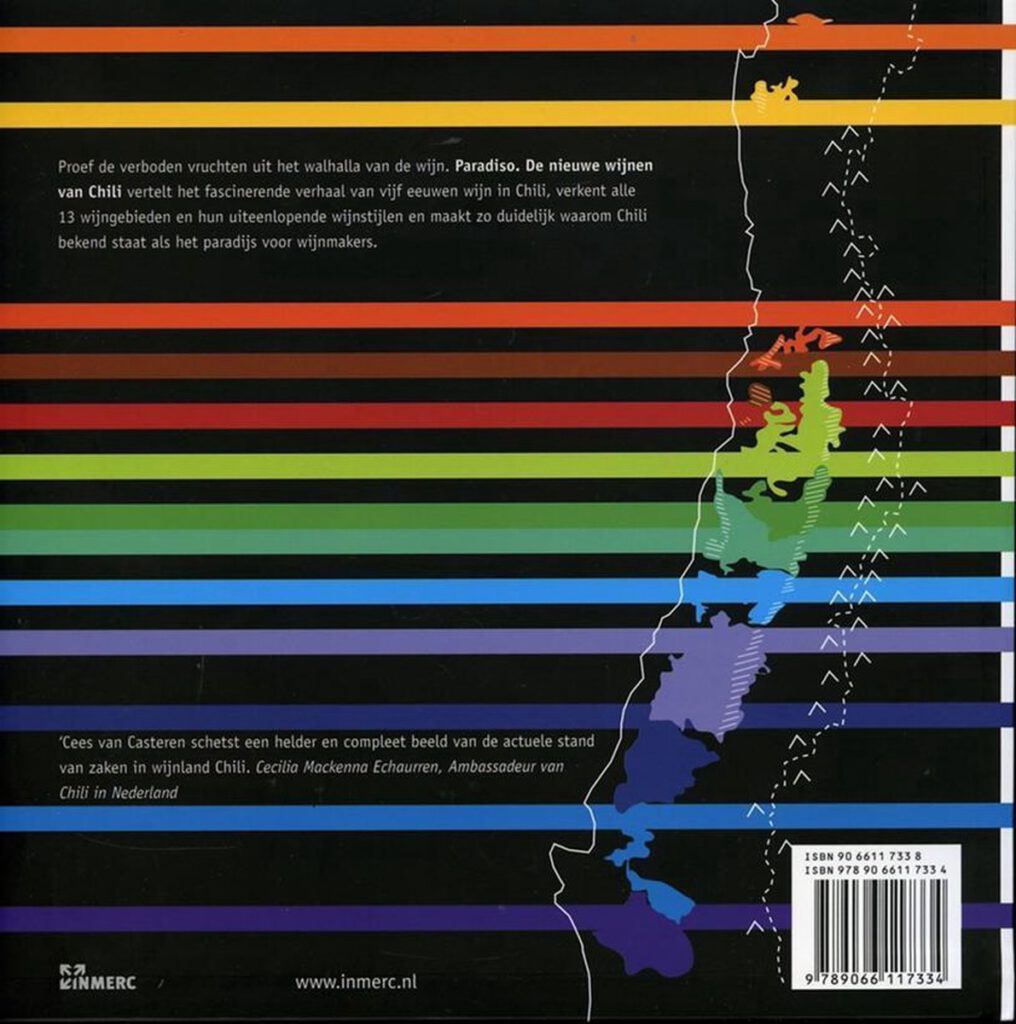

Comments
2 responses to “Book Notes: Cees van Casteren – Paradiso (2006)”
[…] Notes: Jan Read – The Wines of Chile (1994) Book Notes: Cees van Casteren – Paradiso (2006) ←Previous: Book Notes: Ray Isle – The World in a Wine […]
[…] Book Notes: Hubrecht Duijker – Wines of Chile (1999) Book Notes: Cees van Casteren – Paradiso (2006) […]